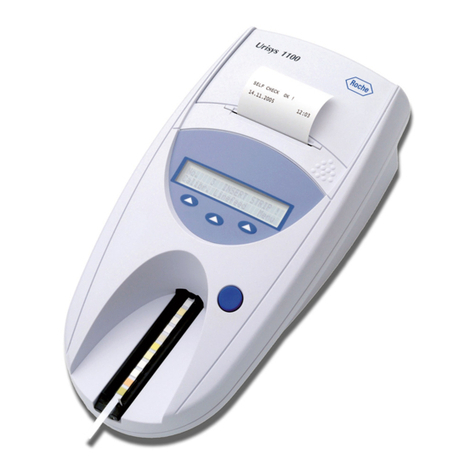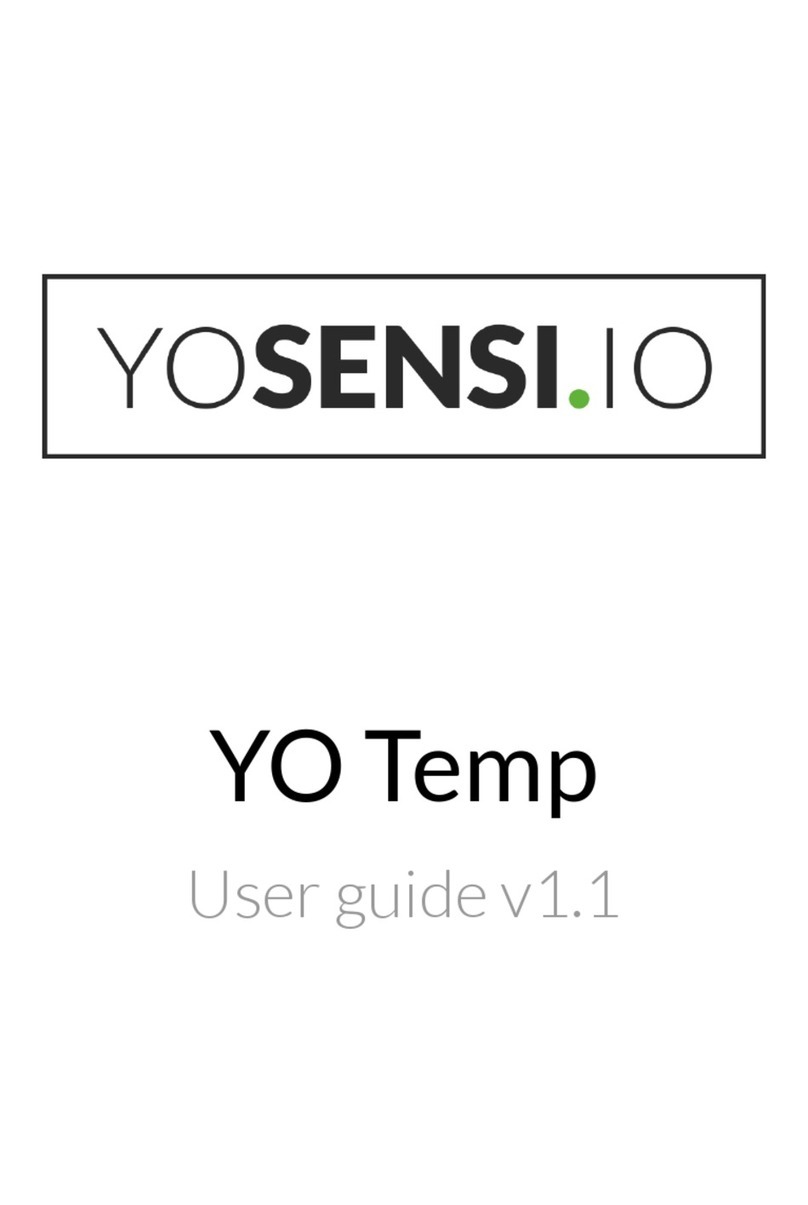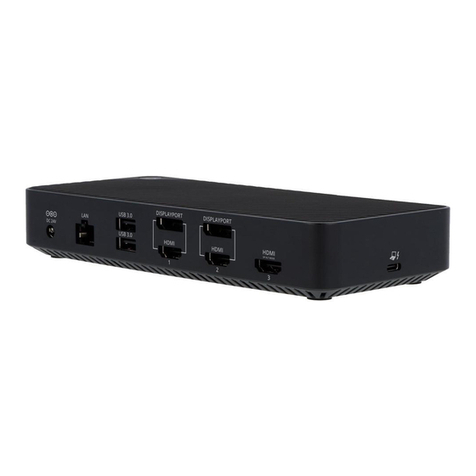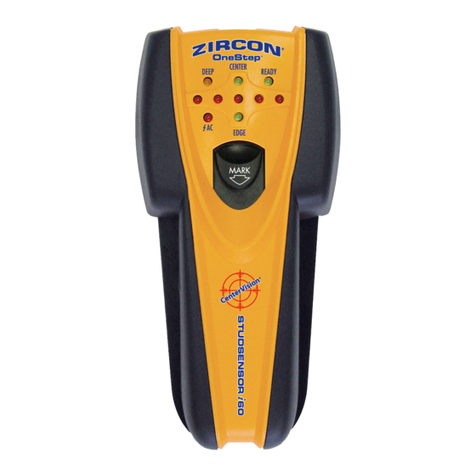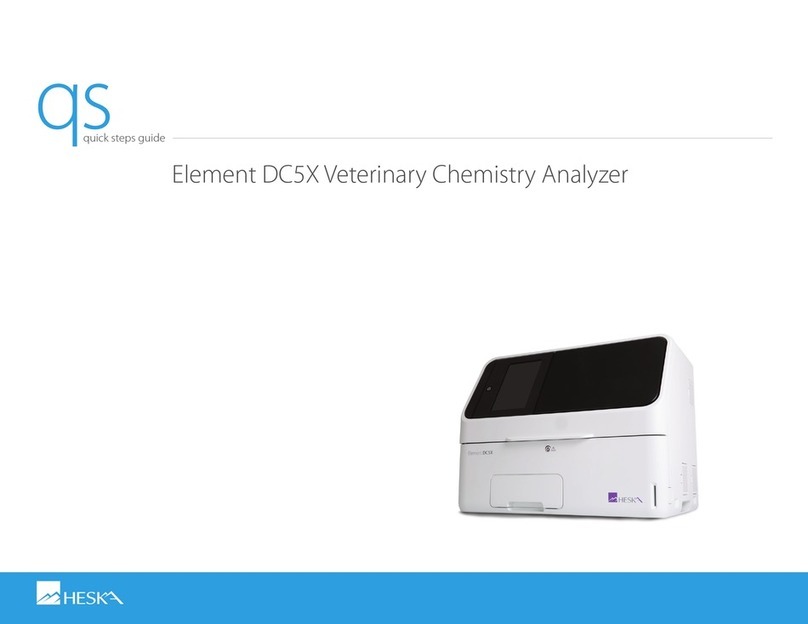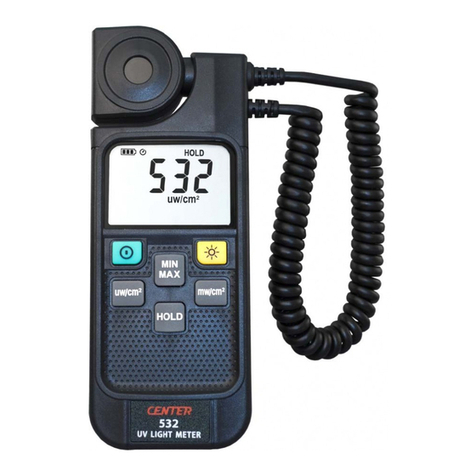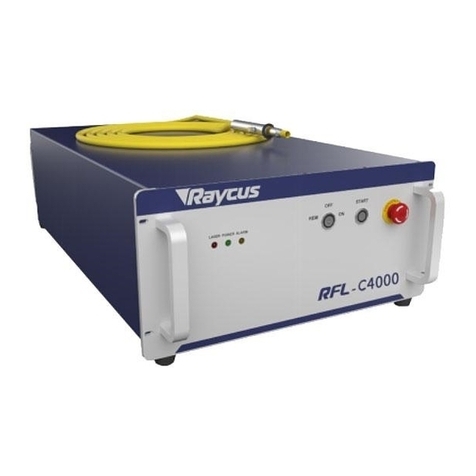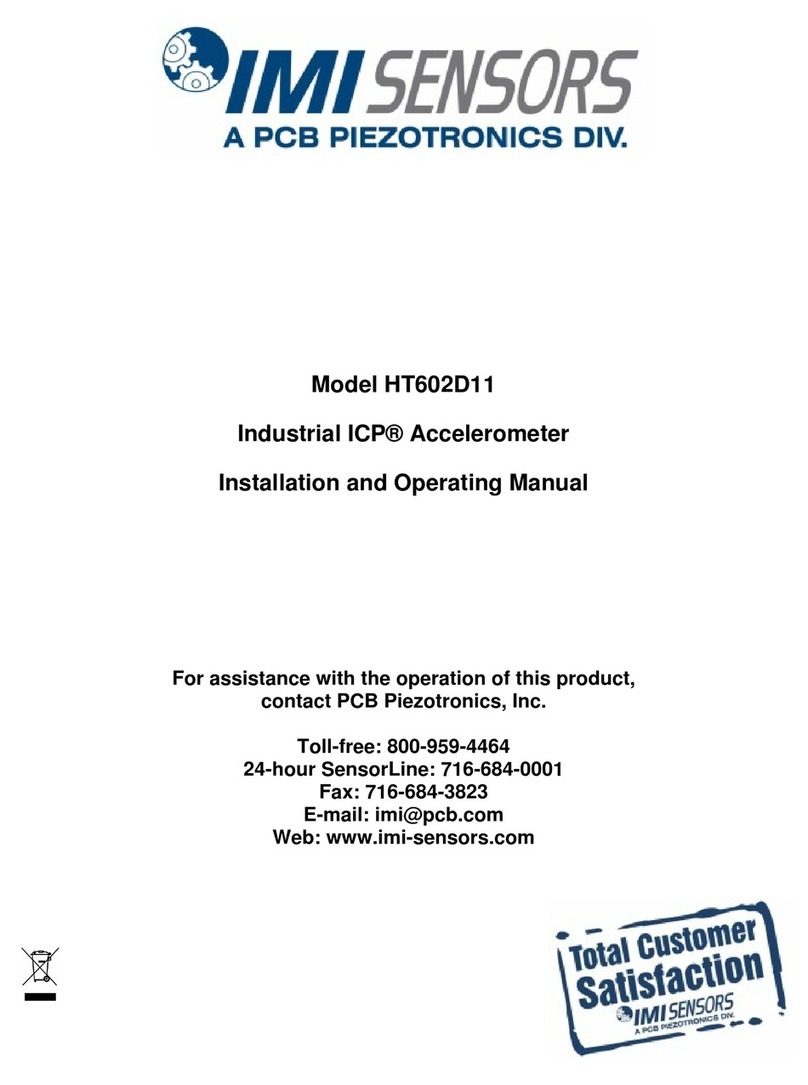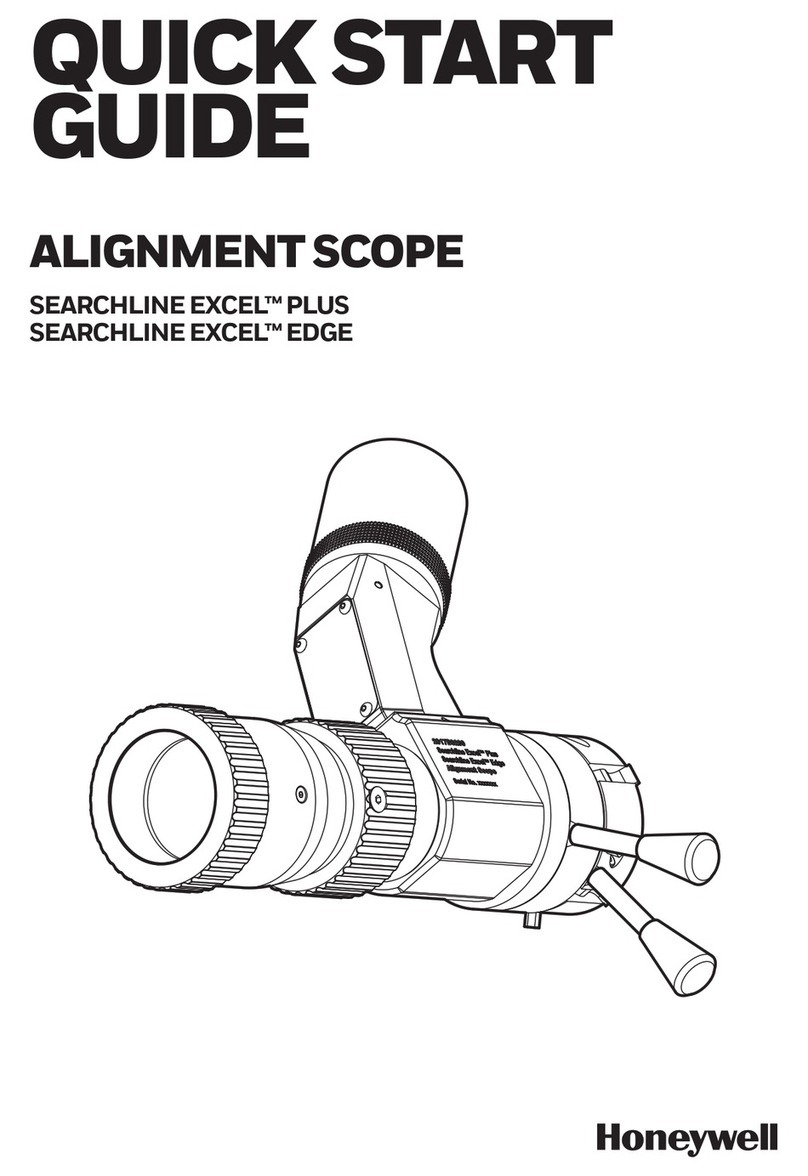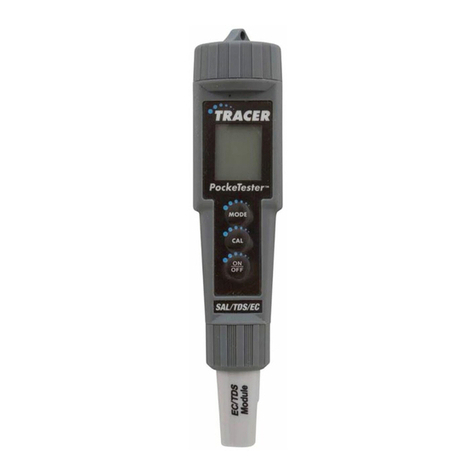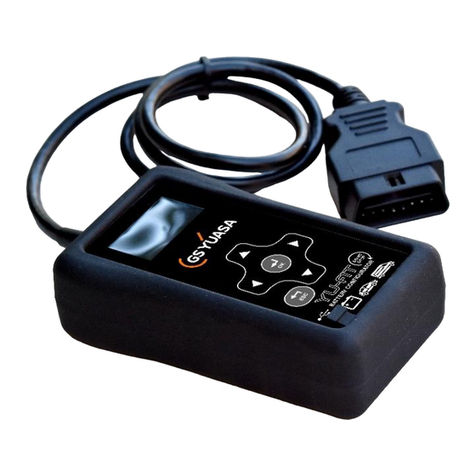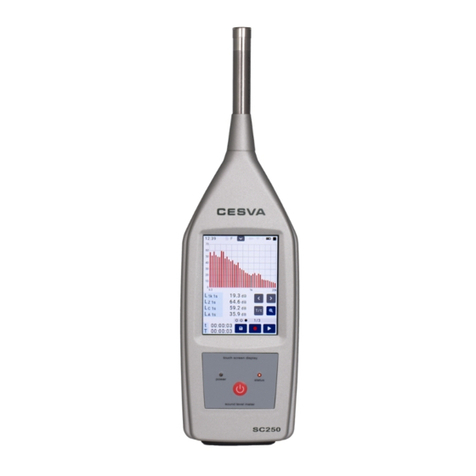Greenlight XPS User manual

Boston Scientific (User’s Manual Template 8.5in x 11in Global, 91091755 Rev/Ver. AA), Manual, MB, XPS, Global, 50623316-01A_pretrans
Black (K) ∆E ≤5.0
1
TABLE OF CONTENTS
1 DEVICE DESCRIPTION ......................................................................................................................................................................................................................3
1.1 Console.....................................................................................................................................................................................................................................3
1.2 FiberLife....................................................................................................................................................................................................................................3
1.3 Vaporization .............................................................................................................................................................................................................................3
1.4 Coagulation..............................................................................................................................................................................................................................3
1.5 User Information .....................................................................................................................................................................................................................3
1.6 Contents....................................................................................................................................................................................................................................3
2 INTENDED USE/INDICATIONS FOR USE .......................................................................................................................................................................................3
3 CONTRAINDICATIONS......................................................................................................................................................................................................................4
4 WARNINGS.........................................................................................................................................................................................................................................4
5 PRECAUTIONS....................................................................................................................................................................................................................................4
6 ADVERSE EVENTS .............................................................................................................................................................................................................................5
6.1 Some Adverse Events Further Explained............................................................................................................................................................................6
6.2 Complications And Risks By Indication ..............................................................................................................................................................................7
7 HOW SUPPLIED..................................................................................................................................................................................................................................8
7.1 Handling and Storage.............................................................................................................................................................................................................8
8 SAFETY ................................................................................................................................................................................................................................................8
8.1 Eye Injury..................................................................................................................................................................................................................................8
8.2 Burns.........................................................................................................................................................................................................................................9
8.3 Reflection of the Beam From Instruments..........................................................................................................................................................................9
8.4 Ignition of Flammable Materials...........................................................................................................................................................................................9
8.5 Electrical...................................................................................................................................................................................................................................9
8.6 Operating Room Environment...............................................................................................................................................................................................9
8.7 Safety Features of the Laser System.................................................................................................................................................................................10
9 CONSOLE DESCRIPTION ................................................................................................................................................................................................................11
10 ACCESSORIES ................................................................................................................................................................................................................................13
10.1 Video Camera Insert ..........................................................................................................................................................................................................13
10.2 Laser Protective Eyewear .................................................................................................................................................................................................13
11 INSTALLATION ...............................................................................................................................................................................................................................13
11.1 Responsibility of BSC .........................................................................................................................................................................................................13
11.2 Responsibility of Customer................................................................................................................................................................................................13
11.3 Positioning of the Console.................................................................................................................................................................................................13
11.4 Power Requirements..........................................................................................................................................................................................................13
12 INSTRUCTIONS FOR USE .............................................................................................................................................................................................................14
12.1 Touchscreen and Footswitch............................................................................................................................................................................................14
12.2 Preparation ..........................................................................................................................................................................................................................14

2
Boston Scientific (User’s Manual Template 8.5in x 11in Global, 91091755 Rev/Ver. AA), Manual, MB, XPS, Global, 50623316-01A_pretrans
Black (K) ∆E ≤5.0Black (K) ∆E ≤5.0
12.3 Procedure.............................................................................................................................................................................................................................17
12.4 After the Procedure............................................................................................................................................................................................................18
13 TECHNICAL DATA ..........................................................................................................................................................................................................................19
13.1 Safety Classifications and Electromagnetic Compatibility .........................................................................................................................................19
14 MAINTENANCE..............................................................................................................................................................................................................................22
14.1 Care of the Console ............................................................................................................................................................................................................22
14.2 Preventative Maintenance................................................................................................................................................................................................22
14.3 Coolant Refill Instructions .................................................................................................................................................................................................22
14.4 Instructions How to Refill Coolant ...................................................................................................................................................................................22
14.5 End of Useful Life ................................................................................................................................................................................................................23
15 TROUBLESHOOTING .....................................................................................................................................................................................................................23
15.1 Courtesy Messages............................................................................................................................................................................................................23
15.2 Service Prompts..................................................................................................................................................................................................................24
16 WARRANTY ....................................................................................................................................................................................................................................25
16.1 Limitation of Warranty........................................................................................................................................................................................................25
16.2 Additional Terms of Warranty for Mobile Systems .......................................................................................................................................................25
16.3 Transport of the System.....................................................................................................................................................................................................25

Boston Scientific (User’s Manual Template 8.5in x 11in Global, 91091755 Rev/Ver. AA), Manual, MB, XPS, Global, 50623316-01A_pretrans
Black (K) ∆E ≤5.0Black (K) ∆E ≤5.0
3
ONLY
Caution: Federal Law (USA) restricts this device to sale by or on the order of a physician.
WARNING: Users of the GreenLight XPS™ Laser System should read this manual thoroughly before attempting surgical procedure. Pay attention
to all warnings, contraindications, precautions, and adverse events in this manual and other related material. Failure to thoroughly understand
and follow all instructions may result in harm to the patient or the user of the laser system.
1 DEVICE DESCRIPTION
The GreenLight XPS Laser System is designed for the vaporization and coagulation of soft tissue using light. One example procedure is the
endoscopic (transurethral) resection of the prostate for the treatment of Benign Prostatic Hyperplasia (BPH). The laser system consists of a
console, which generates the green laser light and a fiber optic delivery device that transmits laser light from the console to the patient. This laser
system is not intended to treat prostate cancer.
1.1 Console
The console is a diode-pumped solid-state laser utilizing Nd:YAG laser gain medium and Acousto-Optic Q Switch. The primary wavelength is 1064 nm.
Frequency-doubling crystal is used to generate a 532 nm output beam. Quasi-CW pulse repetition rate is 23.6 kHz. Pulse duration is approximately
100 ns. Pulse energy is approximately 8 mJ at maximum power (180 W). The console generates visible green 532 nm laser light. In vaporization
mode, the power settings range from 20 W to a maximum power determined by the fiber delivery device. In coagulation mode, the power settings
range from 5 W to 40 W. The console features a plug and play capability that self-adjusts to the facility’s supply voltage, eliminating the need for
electrical modifications of the operating facility. The console includes internal cooling mechanisms ensuring safe operating temperatures with no
external water connection. Laser energy emission and console status changes are activated through a surgeon-controlled, color-coded footswitch
or console touchscreen feature.
1.2 FiberLife
The console is equipped with the FiberLife feature. The FiberLife feature continuously monitors the temperature of the tip of the fiber and momentarily
stops the laser emission when the fiber gets too hot. In most cases, this will prevent damage to the fiber if tissue or vapor bubbles accumulate on the
tip or there is excessive heating of the fiber.
In most cases, the laser will turn back on immediately and the procedure continues without interruption. There will be noticeable blinking of the
working beam. If the FiberLife feature is activated continuously, vaporization efficiency will be significantly reduced. In this case, the fiber should
be cleaned or replaced. The console will automatically detect this condition, put the laser in Standby mode, and display a message.
The FiberLife feature will stop laser emission if the laser is accidentally fired while inside the cystoscope. Generally, this will prevent serious
damage to the cystoscope. Some discoloration of the metal may still occur, which can increase the possibility of corrosion.
1.3 Vaporization
The console uses photo-selective vaporization for the resection of soft tissue. The 532 nm green laser light emitted is strongly absorbed by
oxyhemoglobin in red blood cells. Absorption of the laser light energy results in the generation of heat, which bursts cells, effectively vaporizing the
targeted tissue. Additionally, the heat can coagulate blood vessels near the resected tissue, allowing for a clear surgical field. If bleeding occurs,
the console also has a pulsed coagulation feature.
1.4 Coagulation
The console has a pulsed coagulation feature. In this mode, activated when the coagulation (coag) footswitch is pressed, laser emission is pulsed
at a rate of ~12.5 Hz with a duty cycle of ~25 %. This pulse mode improves the coagulative effect.
1.5 User Information
Only persons trained in the use of the laser console and who have sufficient medical knowledge should use the GreenLight XPS Laser System. The
user should have a demonstrated understanding of the laser console’s operation and the risk associated with improper use.
1.6 Contents
• LaserConsole
• Footswitch
• FiberPole
• KeyChain
• LaserIn-UseSign
• PhysicianProtectiveEyewear
• SpectatorProtectiveEyewear
2 INTENDED USE/INDICATIONS FOR USE
The GreenLight XPS Laser System is intended for the surgical incision, excision, vaporization, ablation, hemostasis, and coagulation of soft tissue.
All soft tissue is included, such as skin, cutaneous tissue, subcutaneous tissue, striated and smooth tissue, muscle, cartilage meniscus, mucous
membrane, lymph vessels and nodes, organs, and glands.
Suggested applications include:
• General Surgery: Vaporizing, coagulating, incising, excising, debulking, and ablating of soft tissue as well as in endoscopic (for example,
laparoscopic) or open surgeries.

4
Boston Scientific (User’s Manual Template 8.5in x 11in Global, 91091755 Rev/Ver. AA), Manual, MB, XPS, Global, 50623316-01A_pretrans
Black (K) ∆E ≤5.0Black (K) ∆E ≤5.0
• Gastroenterology: Tissue ablation and hemostasis in the gastrointestinal tract; esophageal neoplastic obstructions, including squamous cell
carcinoma and adenocarcinoma; gastrointestinal hemostasis (including varices, esophagitis, esophageal ulcer, Mallory-Weiss tear, gastric
ulcer, angiodysplasia, stomal ulcers, non-bleeding ulcers, gastric erosions); gastrointestinal tissue ablation (benign and malignant neoplasm,
angiodysplasia, polyps, ulcers, colitis, hemorrhoids).
• Gynecology: Vaporizing, incising, or coagulating tissue associated with treatments of conditions such as endometriosis; cervical, vulvar, and
vaginal intraepithelial neoplasia; condyloma acuminata; uterine septum; intrauterine adhesions; submucosal fibroids.
• Head and Neck/Otorhinolaryngology (ENT): Tissue incision, excision, ablation, and vessel hemostasis.
• Neurosurgery: Incising, excising, coagulating, and vaporizing neurological tumors of the firm texturedtype.
• Ophthalmology: Post-vitrectomy endophotocoagulation of the retina.
• Plastic Surgery: Vaporizing, coagulating, incising, excising, debulking, and ablating of soft tissue in endoscopic and open procedures.
• Spinal Surgery: Percutaneous lumbar discectomy.
• Thoracic Surgery: Vaporizing, coagulating, incising, excising, debulking, and ablating of soft tissue, including lung tissue in thoracoscopic
or open procedures.
• Urology: Cutting, coagulating, or vaporizing urologic soft tissues. Open endoscopic minimally invasive urological surgery (ablation,
vaporization, incision, excision, and coagulation of soft tissue) including treatment of bladder, urethral and ureteral tumors; condylomata;
lesions of external genitalia; urethral and penile hemangioma; urethral strictures; bladder neck obstructions; and vaporization of prostate
tissue for men suffering from Benign Prostatic Hyperplasia (BPH).
The GreenLight XPS™ Laser System is intended for the hospital, office, and outpatient surgery center markets.
3 CONTRAINDICATIONS
The laser system is contraindicated for patients with the following conditions:
• Generalmedicalconditionthatcontraindicatessurgicalintervention
• Whenappropriateanesthesiaiscontraindicatedbypatienthistory
• Calcifiedtissue(especiallytumors)
• Hemostasisofvesselsoverapproximatelytwomillimetersindiameter
• Whenlasertherapyisnotconsideredthetreatmentofchoice
• Uncontrolledbleedingdisordersandcoagulopathy
• Prostatecancer
• Acuteurinarytractinfection(UTI)
• Severeurethralstricture
The GreenLight XPS Laser System is contraindicated in the presence of severe urethral strictures; however, the system can be used in the
treatment of urethral strictures with proper cautions. A severe stricture shows visible narrowing on urethrography or ultrasonography, with near
total obstruction that makes passage of instruments difficult or dangerous. Use caution to avoid injury to urethral tissue.
4 WARNINGS
• Everyoneintheroomisrequiredtowearprotectiveeyewear.
• Neveruseaclamptosecurethelaserfibertoadrape.Theuseofaclamptosecureafibermaycausethefibertobendatsharpangles,
which can damage the fiber, causing an unsafe condition. The fiber can break and release laser energy, causing a burn in the protective
jacket. If undetected, this condition will result in a burn or ignition of flammable materials.
• Donotfirethelaserunlesstheaimingbeamisvisibleanddirectedatthetargetedtissue.
• Neveractivatethelaserenergyunlessthefibertipextendsvisiblybeyondthetipoftheendoscope.
• Unauthorizeduseofinternalcontrols,adjustmentstotheequipment,orperformanceofproceduresotherthanthosespecifiedherein,may
result in hazardous radiation exposure.
• Warningsignsarenotinterchangeable.Selectasignthatisappropriateforthewavelengthsinuse.
• Whenusinganodized,blackchromefinished,orebonizedinstrumentsduringasurgicalprocedure,additionalcareshouldbetakento
prevent burns. These instruments will become extremely hot when they come in contact with a laser beam and are not able to dissipate
heat quickly. When tissue is touched under these conditions, a burn may result.
• Unauthorizedmodificationofthisequipmentisnotallowed.Donotattempttorepairoralteranycomponents/partsoftheGreenLightXPS
Laser System. All repairs and servicing are to be performed only by Boston Scientific Corporation (BSC) or personnel authorized by BSC.
5 PRECAUTIONS
• Beforeoperatingthelasersystem,surgeonsandallstaffoperatingthelasershouldcarefullyreadandbecomefamiliarwiththeUser’sManual.
• DonotattempttoturnonthelasersystemuntilithasbeeninstalledandtestedbyaBSCserviceengineer.Severedamagetothelaser
system may result.
• Alterationsinsurgicalapproachortechniquemayberequiredtoaccommodatelaseruse.
• Thelasersystemisasurgicaldeviceusedbysurgeonswhohavebeentrainedinlasersurgerythroughcourses,preceptorships,orunder
the guidance of other surgeons knowledgeable in laser use.
• Thesurgeonshouldbecomefullyacquaintedwiththeuniquesurgicaleffectsproducedwiththelasersystembeforeclinicaluse.These
effects include coagulation, depth of penetration, and cuttingintensity.

Boston Scientific (User’s Manual Template 8.5in x 11in Global, 91091755 Rev/Ver. AA), Manual, MB, XPS, Global, 50623316-01A_pretrans
Black (K) ∆E ≤5.0Black (K) ∆E ≤5.0
5
• Theriskofcombustion,perforation,andlaser-inducedhemorrhage,allofwhichcouldcauseseriousorfatalcomplications,mustbefully
explained to the patient.
• Aswithnon-lasertreatments,adversereactionssuchasfever,chills,sepsis,edema,andhemorrhagemayoccurafterlasertreatment.In
extreme cases, death may occur due to procedural complications, concurrent illness, or the application of the laser.
• Cautionshouldbetakenwhenradiationtherapyandlasertherapyaretobeusedconcurrently,includingmorestringentpost-operative
monitoring. Patients who have undergone radiation therapy may present a greater risk of perforation or tissue erosion. Use caution with
patientswhohadpreviousesophageal/trachealfistulaeorepisodesofaspiration.
• Usecautionwhentreatingpatientswhohaddifficultywithpreviousendoscopic/cystoscopicprocedures.
• Noclaimismadethatthelasersystemwillcurethemedicalconditionoreliminatethediseasedentity.Repeatedtreatmentoralternative
therapies may be required.
• BSChasnoclinicalinformationorexperienceconcerningtheuseofthelasersystemonpregnantwomenornursingmothers.
• Beforeturningthelasersystemon,operatingroompersonnelandthepatientshouldbewearingprotectiveeyewearsuitableforthelaserenergy.
• Abasinofwatershouldbeavailableincaseafireshouldoccur.
• Donotpresseitherfootswitchwhilecheckingtheaimingbeam.
• Toavoiddamagefromthetreatmentbeamoritsbackscatter,itisrecommendedthefiberbefullyvisibleinthevisualfield.Donotfirethe
laser unless the aiming beam is visible and directed at the intended target. Aim and use the laser only on tissues that are in full view.
• Avoidfiringthelaserifthefibertipisinanairpocket.
• Donotburythefiberintissue.Donotusethefiberasaprobe.
• Firingtheworkingbeamcontinuouslyatonelocation(notsweepingthebeam)mayresultindifficulttocontrolbleedingorperforation.
• Ifextendedcontactbetweenthefibertipandtissueisunavoidable,usethelowestpoweratwhichacceptablevaporizationcanbe
achieved, but no more than 80 W.
• Iftheworkingbeamoraimingbeamexitsthefiberinanunusualdirection,ceasefiringimmediately,determineiftherehasbeenunintended
tissue damage and take appropriate action. Replace the fiber before continuing with the procedure.
• Thesurgeonshouldcarefullyassessthetargetandsurroundingtissue,andthenbeginatthelowestappropriatepower,withshortduration
exposures.Donotadjustthepowerofthelaseruntiltheeffectofthelaseronthetissuehasbeenevaluated.Notethesurgicaleffectand
adjust the settings and sweeping speed until the desired effect is obtained.
• Useoflowerpowerlevelsandshorterexposuretimesarerequiredtopreventthermaldamagetounderlyingstructures,forexample,tothin-
walled structures, such as the bladder.
• Tissueperforationcanoccurifexcessivelaserenergyisapplied.Thiscanoccurusingexcessivelaserpowerortheapplicationofpower
for excessive periods of time, particularly on diseased tissue. Examples of diseased tissue include tissue that has undergone brachytherapy,
tissue that is infected, or tissue that has thinned due to another underlying disease other than BPH.
• Usecautionwhenlasingtissueincloseproximitytoknownarteries,nerves,andveins.
• Usecautiontoprotectendotrachealtubesfromlaserradiation.Ignitionorperforationofendotrachealtubesbythelaserbeamcouldresult
in serious or fatal patient complications.
• Thelasermaynotbeeffectiveforcoagulationinmassivehemorrhagesituations.Thesurgeonmustbepreparedtocontrolhemorrhages
with strident alternative non-laser techniques, such as ligature or electrocautery.
• Thesurgeonshouldschedulefollow-upvisitsinthesamemannerasforpatientsundergoingsuchsurgerywithothermodalities.
• Exercisecareforspecialrisksrelatedtothedisposalofthedevice.SeeEndofUsefulLifesection.
• Thelasersystemmustbekeptdryduringstorageandtransportwithtemperaturesbetween:
• 32°Fto104°F(0°Cto40°C)withallwaterdrainedfromsystem
• 39°Fto104°F(4°Cto40°C)withcoolingsystemchargedwithdistilledordeionizedwater
Improper storage or transport of the laser system may result in damage to the cooling system, optical resonator, and other critical components.
6 ADVERSE EVENTS
Users should read and understand the specific indications, contraindications, warnings, precautions, and current adverse events included with
the fiber used in conjunction with the GreenLight XPS™ Laser System. Potential adverse events associated with the GreenLight XPS Laser System
are, but not limited to, the following:
• Abdominalbloating(intestinalgas)
• Acuterenalfailure
• Allergicreaction
• Aspiration
• Bladderneckcontracture
• Bladderspasm
• Bleeding
• Burn
• Chills
• Clotretention

6
Boston Scientific (User’s Manual Template 8.5in x 11in Global, 91091755 Rev/Ver. AA), Manual, MB, XPS, Global, 50623316-01A_pretrans
Black (K) ∆E ≤5.0Black (K) ∆E ≤5.0
• Contaminationofthedevicemayleadtoinjury,illness,ordeathofthepatient
• Deepvenousthrombosis
• Delayinhealing
• Dysuria
• Edema
• Embolism
• Epididymitis
• Erectiledysfunction(ED)
• Fatigueorweakness
• Fever
• Fluidoverload/hyponatremia
• Gasover-distension
• Hematospermia
• Hematuria
• Infection
• Leukocytosis
• Malfunctionoflaserfiberorconsoleresultinginaninjuryorprolongedprocedure
• Nocturia
• Overactivebladder
• Pain:
• AbdominalpainunresponsivetoNonsteroidalAnti-inflammatoryDrugs(NSAIDs)
• Armorlegpain
• Headache
• Back/lowbackpain
• Bodyaches
• Pelvic
• Penile
• Pelvichematoma
• Penileurethralinjury
• Perforation
• Pneumothorax
• Profuseperspiration(notfever-related)
• Prostatitis
• Pulmonaryembolus
• Retrogradeejaculation
• Sepsis
• Stricture
• Tissuedamage
• Tissuesloughing
• Ulceration
• Unretrieveddevicefragment
• Ureteralorificeinjury
• Urethralstricture
• Urgency
• Urinaryfrequency
• Urinaryincontinence
• Urinaryretention
• Urinarytractinfection
6.1 Some Adverse Events Further Explained
Bleeding: Patients may experience bleeding at the site of the laser therapy during or after laser therapy. Post-treatment hemoglobin and hematocrit
are recommended lab tests to assess the severity of bleeding.
Fever and Leukocytosis: Immediately after laser therapy, the patient may experience fever and leukocytosis, which are commonly associated with
tissue destruction. These generally resolve without treatment. Cultures may be indicated to exclude the possibility of infection.
Pain: Short-livedpainmayoccurimmediatelyafterendoscopic/cystoscopiclasertherapyandmaypersistfor48hours.

Boston Scientific (User’s Manual Template 8.5in x 11in Global, 91091755 Rev/Ver. AA), Manual, MB, XPS, Global, 50623316-01A_pretrans
Black (K) ∆E ≤5.0Black (K) ∆E ≤5.0
7
Perforation: Perforation can occur as a result of excessive exposure to laser radiation. Perforation can occur from tumor erosion, or as a result
ofendoscopic/cystoscopicprocedure.Toclinicallydiagnoseperforations,patientsmustbecloselymonitoredpost-operativelythroughphysical
assessment of clinical symptoms, hematology studies as deemed appropriate, and radiography.
Sepsis: Laser-ablated tissue may become infected after therapy. If a question of sepsis exists, a culture should be taken and other appropriate
evaluations made.
As with conventional endoscopic treatments, adverse reactions such as fever, chills, sepsis, edema, and hemorrhage are possible after laser
treatment. In extreme cases, death may occur due to procedural complications, concurrent illness, or the application of the laser. Use caution
when treating patients who had difficulty with previous endoscopic procedures.
6.2 Complications And Risks By Indication
Forallindications,seeIntendedUse/IndicationsforUsesection.
General Surgery
Complications and Risks: See Adverse Events for general information. There is a potential risk of thermal damage at the site of the incision.
Forendoscopic/laparoscopicprocedures,therearenoknowncomplicationsandrisksspecifictogeneralsurgeryotherthanthoseassociatedwith
laparoscopy procedures in general (that is, over-distension, subcutaneous emphysema).
See Contraindications for general information. There are no known contraindications specific to general surgery at this time. Endoscopic/
laparoscopic procedure patients should be treated with alternative methods when laparoscopy is contraindicated.
Gastroenterology
See Adverse Events for general information.
The risk of combustion, perforation and laser-induced hemorrhage, all of which could cause serious or fatal complications, must be fully explained
to the patients.
Use caution when radiation therapy and laser therapy are to be used concurrently, including more stringent post-operative monitoring. Patients
who have undergone radiation therapy may present a greater risk of perforation or tissue erosion. Use caution with patients who had previous
esophageal/trachealfistulaeorepisodesofaspiration.
Discontinuelasertherapyimmediatelyifthepatientdevelopscardiopulmonaryproblems.
To avoid the potential risk of endoscope ignition or damage from the treatment beam or treatment beam backscatter, it is recommended that the
fiber extend 1 to 2 cm beyond the distal port of the endoscope, so it is entirely in the visual field.
After esophageal procedures, swallowing may be paradoxically worsened, rather than immediately improved. This is caused by secondary tissue
edema. Explain this potential problem to the patient before therapy.
See Contraindications for general information. There are no known contraindications specific to gastroenterological use at this time.
Gynecology
See Adverse Events for general information. There are no known complications and risks specific to gynecology at this time.
See Contraindications for general information. These procedures may be contraindicated for women who are pregnant or have a suspected
pregnancy, and for whom hysteroscopy or laparoscopy, or open abdominal surgery would not be appropriate. These procedures may be
contraindicated for women with other medical or surgical conditions that would contraindicate laparoscopic or hysteroscopic surgery.
Head and Neck/Otorhinolaryngology (ENT)
See Adverse Events for general information. For cosmetic purposes, it is recommended that initial incisions be performed with conventional
scalpels or that skin edges incised with the laser be cut back by approximately 0.5 mm to 1.0 mm with a scalpel before closing the skin.
Use caution to protect the endotracheal tubes. Contact with the laser beam could result in serious or fatal patient complications. When using the
laser for coagulation in ENT applications, it is essential to de-focus the laser beam spot to preclude tissue damage beyond the desired coagulation
site. Unintended tissue damage could result from a focused treatment beam. While clinical experience to date has demonstrated that lasers can
be safely used for hemostatic in ENT, there have been reports of serious complications when lasers are used inappropriately.
The main risk of laser use is thermal damage to the surrounding vital structures, which is risky for oval window surgery as energy applied directly to the
open oval window will pass directly through the perilymph and be absorbed by the inner ear structures. Other complications related to laser surgery
include, but are not limited to burns, scarring, hemorrhage, perforations, fires and explosions, eye injury, electrical shock, swelling, and obstruction.
Thermal damage caused by laser treatment has been related to adverse side effects and other risks. For example, where laser tissue welding
isused,suchasinlaser-assistedmyringoplasty,alowstrengthanastomosisorthermaldamagetotissuearethemainconcerns.Delayedpost-
operative pain and slow healing are both thought to be related to thermal damage caused by the laser during tonsillectomy.
Compared to traditional scalpel cutting surgery, laser treatment has sometimes resulted in slower healing in procedures such as uvulopalatoplasty
and tonsillectomy. Tissue necrosis, post-operative edema, or bleeding was rarely seen. Slow healing increases the risk of infection. The presence
of necrosis could leave the tonsillar bed more vulnerable to infection.
See Contraindications for general information. There are no known contraindications unique to ENT.
Neurosurgery
Particular care must be exercised in heating the brain stem area. Flushing with cool saline in such areas will reduce heat build-up and related bradycardia.
See Adverse Events for general information. There are no known specific complications and risks to neurosurgery use at this time.
See Contraindications for general information. These procedures are contraindicated for the treatment of necrotic or calcified tumors.
Ophthalmology
See Adverse Events for general information. There are no known specific complications and risks to ophthalmology use at this time.
See Contraindications for general information. These procedures are contraindicated for the treatment of necrotic or calcified tumors.

Process Black ΔE ≤5.0 / CMYK Image
8
Boston Scientific (User’s Manual Template 8.5in x 11in Global, 91091755 Rev/Ver. AA), Manual, MB, XPS, Global, 50623316-01A_pretrans
Black (K) ∆E ≤5.0
Spinal Surgery
See Adverse Events for general information. Some patients have reported an inflammatory response four to ten days post-operative at the site of
surgery. This has occurred in patients who have reported a successful procedure post-operatively and are otherwise asymptomatic.
The occurrence of this adverse event has reportedly been significantly reduced by the administration of an anti-inflammatory agent, into the
surgical site, at the completion of the procedure.
With surgical procedure in the spine, there is the potential risk of infection, inflammation and post-operative pain. The injection of antibiotics, anti-inflammatory
drugs, and analgesics into the surgical area at the completion of the procedure has been reported to reduce the occurrence of these adverse events.
See Contraindications for general information. General anesthesia is specifically contraindicated for this procedure.
This procedure is contraindicated, if the following conditions exist:
• Non-containeddischerniation(leakageofdyeintoepiduralspacebydiscogram)
• Radiographicevidenceofspinalstenosis>50%
• Progressiveneurologicalloss
• CaudaEquinaSyndrome
• Tumor
• Infection
• Fracture
• Spondylolisthesis
• Spinalinstability
• Freefragmentsorothersignificantpathologies
• Significant(>30%)narrowingofdiscspace,possiblefacetdamage
• Patientswithprevioussurgery/chemonucleolysisattheindicatedlevelmaybeacandidateforlaserdiscdecompression.
• Allotherfactorsshouldbeconsidered.
Plastic Surgery
The laser is not intended for use for skin incision or liposuction. See Adverse Events for general information. Initial skin incision using the laser
may result in undesirable scar formation.
See Contraindications for general information. There are no known contraindications unique to plastic surgery.
Thoracic Surgery
The use of contact delivery devices (for example, sculptured fibers) on lung tissue, in conjunction with the wavelength, is considered investigational.
When performing thoracoscopic surgery it is vital for the surgeon to appreciate that the view provided is monocular (not binocular) and that depth
perception is decreased. Practice on the part of the surgeon to get the feel of operating through a monocular scope is strongly recommended
before clinical use.
In surgery of a body cavity that is insufflated, the surgeon and the anesthesiologist must appreciate the risk of embolism, should a blood vessel be
opened. Most surgeons prefer CO2 as the pressurizing gas of choice, as it is readily absorbed and does not lead to embolism. The anesthesiologist
should monitor the patient for unusually high CO2 absorption, and adjust procedures, as necessary.
See Adverse Events for general information. There are no known specific complications and risks to thoracic surgery use at this time.
See Contraindications for general information. There are no known contraindications unique to thoracic surgery.
Urology
See Adverse Events for general information.
7 HOW SUPPLIED
Donotuseifthepackageisopenedordamaged.
Donotuseiflabelingisincompleteorillegible.
7.1 Handling and Storage
• Storageandtransporttemperaturewithallwaterdrainedfromthesystem:32°Fto104°F(0°Cto40°C)
• Storageandtransporttemperaturewithcoolingsystemchargedwithdistilledordeionizedwater:39°Fto104°F(4°Cto40°C)
• Storeinadryplace
When in storage or transport outside of the recommended temperature ranges, damage may occur to the cooling system, optical resonator, and other
critical components. The console should be drained using the field drain procedure. For complete draining procedure, contact BSC technical support.
When the console is drained and in storage, the desiccant pack should be replaced on a six-month interval.
8 SAFETY
8.1 Eye Injury
Visible light laser energy passes through the transparent components of the eye (cornea, lens, aqueous, and vitreous humor), and is focused on the
retina. This light can cause an accidental retinal burn. The degree of injury to the eye will depend upon the power of the beam, how focused the
beam is, and how long the eye is exposed to the beam.
Protective eyewear for the operating room staff and patient should be provided. Laser eyewear may not be interchangeable between lasers of
different wavelength, power, or divergence angle.

Boston Scientific (User’s Manual Template 8.5in x 11in Global, 91091755 Rev/Ver. AA), Manual, MB, XPS, Global, 50623316-01A_pretrans
Process Black ΔE ≤5.0 / CMYK Image
9
Black (K) ∆E ≤5.0
WARNING: It is required for everyone in the room to wear protective eyewear.
Eyewearhasbeendesignedtoprotectoperatingroompersonnelfromthe532nmlaserenergy.Theeyewearhasaminimumopticaldensity(OD)
of6.0at532nm.TheeyewearrequirementsforEUare532DL6.Thesetypesoflaserprotectiveeyewearinclude:
• Nearlyclearphysicianlaserprotectiveeyewear—Theessentiallyclearlensmaterialhashighvisiblelighttransmissionandminimalcolor
distortion.
• Orangeprotectiveeyewear—Althoughithasgoodvisiblelighttransmission,theorangecoloroftheplasticlenscausessomecolordistortion.
8.2 Burns
Personnel using lasers should be knowledgeable of the fire hazards associated with laser use. Accidental irradiation of tissue other than the target
tissue may result in a burn or vaporization. Surrounding the target area with moist drapes or saline-soaked sponges will keep it moist and greatly
reduce this hazard.
Flammable or combustible items in the laser environment may include flammable liquids or combustible ointments, gases, plastics, paper or gauze
materials, adhesive or plastic tapes, and endotracheal tubes.
Laser appropriate fire extinguishers and water should be available where lasers are used. Care and precision in aiming and applying laser energy
are important.
WARNING: Never use a clamp to secure the laser fiber to a drape. The use of a clamp to secure a fiber may cause the fiber to bend at sharp
angles and damage the fiber. To do so can result in an unsafe condition. The fiber can break and release laser energy causing a burn in the
protective jacket. If undetected, this condition will result in a burn or ignition of flammable materials.
8.3 Reflection of the Beam From Instruments
Use caution when aiming the laser beam to prevent reflection of the beam off metallic surgical instruments. Mirror-finish instruments are especially
dangerous as they have highly reflective surfaces. The laser light reflected from such instruments is intense and potentially harmful.
Matte, dull, satin-finished, or ebonized instruments have fewer glares, and those with curved surfaces do not reflect light as intensely. While these
instruments usually produce a more diffused reflection that is less harmful, this reflection can still be damaging. Protective eyewear should be worn
at all times to prevent eye damage.
WARNING: When using anodized, black chrome finished, or ebonized instruments during a surgical procedure, additional caution should be
taken to prevent burns. These instruments will become extremely hot when they come in contact with a laser beam and are not able to quickly
dissipate heat. When tissue is touched under these conditions, a burn may result.
8.4 Ignition of Flammable Materials
The laser can ignite many materials used during a surgical procedure. Use of non-flammable materials is strongly recommended.
8.5 Electrical
Electrical hazards with the laser are the same with any electrical device. Use caution when plugging the unit into the wall outlet. The area must be
free of water and user’s hands must be dry.
Always disconnect the laser by grasping the plug and not the power cord. Examine the electrical cord routinely, if signs of wear are noted, contact
BSC technical support to have it repaired or replaced.
8.6 Operating Room Environment
This section describes specific safety measures for the operating room to aid in the safe operation of the laser system. Medical Electrical Equipment
(MEE) is not intended to be used in an oxygen-rich environment.
Laser Warning Signs
The area where the laser system is operated should be labeled. Warning signs that specify the laser wavelength being used should be posted at all
operating room and access door entrances. Figure 1 is an example of a sign suitable for use with the laser system.
Figure 1. Laser Warning Sign

Black (K) ∆E ≤5.0
10
Boston Scientific (User’s Manual Template 8.5in x 11in Global, 91091755 Rev/Ver. AA), Manual, MB, XPS, Global, 50623316-01A_pretrans
Process Black ΔE ≤5.0 / CMYK Image
Remote Door Interlock
Always limit personnel in the operating room to those essential to the procedure. To protect intruding personnel from exposure to the laser beam,
an optional remote door interlock can be connected from the console to the operating room entrance door. This interlock will automatically put
the console in Standby mode if the door is opened during a procedure. The console will remain in Standby mode until the door is closed and the
interlock is reset. Once reset, the user can place the console back in Ready mode and reactivate the surgical beam. The console cannot be placed
in Ready mode, unless the interlock is reset.
If the use of the remote door interlock is desired, the biomedical personnel at the user’s facility can connect it. The user should test the remote
interlock before each use. Access to the console’s interlock function is made through a socket located on the back panel of the console (see Figure 3).
Safety Recommendations
The following are general safety recommendations for the operating room and are not specific to the laser system:
• Whenusingaccessories,tools,disposables,ormaterialsthatwereincontactwiththepatient,takeprotectivemeasurestopreventcross-contamination.
• Keepdrapesandtowelsmoisttopreventtheirignitionandburning.
• Usenon-flammablepreppingsolutions.
• Preventcombustionofmethanegasbypackingtherectumduringperinealprocedures.
• Donotusethelaserinthepresenceofflammableanestheticmixturewithairorwithoxygenornitrousoxide.
WARNING:Donotfirethelaserunlesstheaimingbeamisvisibleanddirectedatthetargetedtissue.
8.7 Safety Features of the Laser System
The GreenLight XPS™ Laser System incorporates the following safety features:
• Thelaserwillstopfiringwhenthepressureisremovedfromeitherfootswitchpedal.
• Anautomaticcircuitbreakershutstheconsoleoffintheeventofanelectricaloverload.
• Thelaserprovidesanoperatingroomdoorinterlockconnection,whichmustbesetupbythebiomedicalpersonnel.
• Thekeycanonlyberemovedwhenthekey-switchisintheOFFposition.
• Anonboardmicroprocessorcontinuouslymonitorsthestatusoftheconsoleanddisplaysmessagesonthescreenalongwithappropriateuserprompts.
• Laserenergycannotbeemittedfromtheconsoleunlessafiberhasbeenconnected.
• ConsolewillgointoreadymodewhentheReadybuttonistouchedonthetouchscreen,orwhenthebuttonontopofthefootswitchispressed.
• Afiberpoleliftsandpositionsthefiberinasafeandunobtrusiveposition.
• Acontinuousaudibletoneisheardwhenthesurgicalbeamisactivated(thatis,footpedalispressed).Ahigherfrequencytoneisheardfor
vaporization and a lower tone for coagulation.
• WhenthelaserisfiredforthefirsttimeafterenteringReadymode,andwheneverswitchingbetweenvaporizationmodeandcoagulation
mode, a voice will annunciate the current mode.
• A2-seconddelayoccursbeforelaserenergyisemittedafterthelaserisplacedinReadymode.
• AnEmergencyLaserStopswitchisavailabletodisabletheconsoleimmediately,inthecaseofanemergency.
• WhenswitchingbetweenReadyandStandbymode,avoicewillannouncethecurrentmode.
Note:Donotattempttoremoveanypanelfromtheconsole.Allpanelsarefittedwithtamper-prooffastenings.Anyattempttoremovethepanels,
unless instructed by authorized BSC personnel, can damage the console and will void the manufacturer’s warranty.
Note: The laser system should be protected against unauthorized use. When the console is not in use, remove the key from the key switch and
place in a secure location.
WARNING: Unauthorized use of internal controls, adjustments to the equipment, or performance of procedures other than those specified herein,
may result in hazardous radiation exposure.
WARNING: No modification of this equipment is allowed.
Tipping Hazard:
Duringtransportation,pullorpushtheconsolecarefullyusingtheintendedhandletopreventtipping.
WARNING: Console may tip if inclined at an angle of greater than 5 degrees.
Rolling Hazard: Secure the console with the wheel locks to prevent the unit from inadvertently rolling.

Boston Scientific (User’s Manual Template 8.5in x 11in Global, 91091755 Rev/Ver. AA), Manual, MB, XPS, Global, 50623316-01A_pretrans
Black (K) ∆E ≤5.0
11
Process Black ΔE ≤5.0 / CMYK Image
9 CONSOLE DESCRIPTION
8. On/Off Key Switch
1. Screen/Touchscreen
2. Card Reader
3. Storage Compartment
4. Fiber Shield
7. Emergency Laser Stop
5. Fiber Pole
6. Fiber Port Cover
9. Footswitch
Figure 2. Front View of Console
1. Screen/Touchscreen—Displaysuserinformation:
• Consolestatus(Standby,Ready)
• Laseroutput(inwatts),separatedisplayforvaporizationandcoagulation
• Aimingbeambrightnesslevel
• Energymeter(displaystotalnumberofJoulesdelivered)
• Exposuretime(displaystotaltimelightisemitted)
• Buttonsonthescreen,whenpressed,placethelaserineitherReadyorStandbymode
• Errorcodesandscreenprompts
2. CardReader—Readsfibercard
3. Storage Compartment
4. FiberShield—Protectsthefiberhubfrominadvertentdamage
5. FiberPole—Securesandprotectsthefiber(retractable)
6. FiberPortCover—Connectionforfiber
7. EmergencyLaserStop—Turnsconsoleoffandterminateslaserlightemissionincaseofemergency
8. On/OffKeySwitch—Switchestheconsoleonandoff
9. Footswitch—Forcontroloflaseremission

12
Boston Scientific (User’s Manual Template 8.5in x 11in Global, 91091755 Rev/Ver. AA), Manual, MB, XPS, Global, 50623316-01A_pretrans
Black (K) ∆E ≤5.0Black (K) ∆E ≤5.0
1. Back Handle
2. Upper Power Cord Storage Hook
3. Footswitch Storage Hook
4. Footswitch Cord Storage Hook
11. Lower Power Cord Storage Hook
12. Circuit Breaker
5. Footswitch Connection
6. Service Port
7. Remote Interlock Socket
8. Coolant Reservoir
9. Coolant Drain
13. Wheel Lock
10. AC Power Cord
Figure 3. Back View of Console
1. Back Handle
2. UpperPowerCordStorageHook—2upperhooksforcoilingfootswitchcord
3. FootswitchStorageHook—2hooksforfootswitchstorage
4. FootswitchCordStorageHook—2hooksforcoilingfootswitchcord
5. Footswitch Connection
6. ServicePort—USBportsforfactoryserviceonly
7. RemoteInterlockSocket—Canbeconnectedtotheroomdoorsothefootswitchwillbedisabledintheeventofentry
8. CoolantReservoir—Forrefillingtheinternalcoolingliquid(seeCoolantRefillInstructions)
9. CoolantDrain—Fordrainingtheinternalcoolingliquid(seeCoolantRefillInstructions)
10. AC Power Cord
11. LowerPowerCordStorageHook—2lowerhooksforcoilingpowercord
12. CircuitBreaker—Automaticallytripsintheeventofapoweroverload,shuttingoffpowertotheconsole
13. WheelLock—Forlockingandunlockingbackwheels

Boston Scientific (User’s Manual Template 8.5in x 11in Global, 91091755 Rev/Ver. AA), Manual, MB, XPS, Global, 50623316-01A_pretrans
Black (K) ∆E ≤5.0Black (K) ∆E ≤5.0
13
10 ACCESSORIES
Theoperatormustuseaccessories/toolsthatwereclearedbyBSCforusewiththelasersystem.BSCassumesnoliabilityandwarrantyfordamage
andconsequentialdamagewhenusingthelasersystemwithnon-qualifiedaccessories/tools.ContactBSCforanup-to-datelistofaccessories/
tools for the GreenLight XPS™ Laser System.
10.1 Video Camera Insert
A video camera insert must be inserted between the telescope and the camera (unless a comparable camera insert is built into the telescope).
Thevideocamerainsertshaveanopticaldensity(OD)of5atawavelengthof532nm.Thisblocksmostofthelaserlight,preventingsaturationof
the video camera sensor. The optimum transmission at wavelengths other than 532 nm and the video camera insert diameter depends on the video
camera and telescope model.
10.2 Laser Protective Eyewear
Eyewearhasbeendesignedtoprotectoperatingroompersonnelfromthe532nmlaserenergy.Theeyewearhasaminimumopticaldensity(OD)
of6.0at532nm.TheeyewearrequirementsforEUare532DL6.
• Physicianprotectiveeyewear—Theessentiallyclearlensmaterialhashighvisiblelighttransmissionandminimalcolordistortion.
• Spectatorprotectiveeyewear—Althoughithasgoodvisiblelighttransmission,theorangecoloroftheplasticlenscausessomecolor
distortion.
11 INSTALLATION
This section provides general guidelines for the installation of the laser system. This laser system has specific installation requirements. It is the
user’s responsibility to fulfill these requirements before the installation of the laser system. Improper installation can result in intermittent operation
and even damage to the laser system. Please read the below information carefully.
11.1 Responsibility of BSC
A BSC service representative will install the laser system. Upon arrival at the installation site, the representative will perform the following:
1. Verify appropriate electrical power is available.
2. Remove the console from the crate and inspect for damage.
3. Perform all optical, electronic, and system checks necessary to bring the laser into operation.
4. Inventory all shipped accessories.
11.2 Responsibility of Customer
Provisions for proper power must be made before the receipt and installation of the laser system. Return visits by service personnel for installation
will not be covered under warranty. The customer should complete the Installation Checklist and return it to BSC or distributor. Upon completion of
the pre-installation site preparation, contact BSC or the distributor to check shipment date and schedule installation of the system.
The laser system uses standard electrical service and has built-in cooling systems; therefore, installation requires minimal site preparation.
11.3 Positioning of the Console
The console must be positioned not more than 5 ft (1.5 m) from the centerline of the treatment table to ensure proper handling of the fiber.
Position the console at least 1 ft (0.3 m) from the wall for proper ventilation during use.
11.4 Power Requirements
ThepowersourcefortheGreenLightXPSLaserSystemmustbeasingle-phaseservicewithvoltagebetween200to240VAC,50/60Hz,current≤20Amp*. The
laser will automatically adjust to the voltage and frequency within this range. The laser can function when some voltage change is present in the
service line; however, the voltage may not vary by more than ± 10 %.
For BSC to provide the correct electrical plug, the customer must provide information about the installed receptacle in the facility to BSC before
installation.Any250VAC,current≤20Amp*, two poles, three wire receptacle can be used if it meets the system’s electrical requirements; meets
facility, city, county, state, and country ordinances; and complies with EN 60601 for leakage current.
It is recommended the GreenLight XPS Laser System use a dedicated circuit breaker with a minimum rating of 16 Amp or higher to ensure normal
operation.
* The 20 Amp rating indicates the current rating that the power source is expected to be capable of supplying to operate the laser at the maximum rated power output of 180 W. The 20 A
rating is neither the minimum nor maximum operational main current requirement; it is a current in which internal circuitry protects the GreenLight XPS Laser System in an over-current
condition.

14
Boston Scientific (User’s Manual Template 8.5in x 11in Global, 91091755 Rev/Ver. AA), Manual, MB, XPS, Global, 50623316-01A_pretrans
Process Black ΔE ≤5.0 / CMYK ImageProcess Black ΔE ≤5.0 / CMYK Image
12 INSTRUCTIONS FOR USE
12.1 Touchscreen and Footswitch
The touchscreen and footswitch are used to control the console. Laser parameters are selected and the console status is changed by using a
touchscreen. Use the button on top of the footswitch to go between Ready and Standby laser status. The aiming beam is activated when the
console is in the Ready mode or the surgical beam is activated. The surgical beam is activated by pressing a foot pedal. Press the yellow pedal for
VAPOR and the blue pedal for COAG.
Power is set by touching the or buttons on the touchscreen. An audible tone will be heard when the buttons are pressed.
Vaporization
Power Indicator
Power Adjust
Buttons
Ready/Standby
Control and Indicators
Engery
Indicator
Changes to the
Set-up Screen
Lasing Time
Indicator
Coagulation Power
Indicator
Power Adjust
Buttons
Reset Engery and
Lasing Time
Figure 4. Touchscreen
Vapor Pedal Coag Pedal
Ready/Standby
Button
Figure 5. Footswitch
12.2 Preparation
1. Ensure protective eyewear is worn by all personnel including the patient.
2. Ensure the circuit breaker on the back of the console is OFF and connect the power cord to an appropriate electrical outlet.
3. Turn the circuit breaker to ON. On the front of the console, turn the key switch to ON.
4. The console’s self-check mechanism detects most problems. A message will appear on the touchscreen to alert the user of problems. Courtesy
messages alert the user of problems that the user can correct. Service prompts alert the user of a problem that requires a service call.

Boston Scientific (User’s Manual Template 8.5in x 11in Global, 91091755 Rev/Ver. AA), Manual, MB, XPS, Global, 50623316-01A_pretrans
Process Black ΔE ≤5.0 / CMYK ImageProcess Black ΔE ≤5.0 / CMYK Image
15
Note: It may take time (typically 5 to 15 minutes, but can be up to 40 minutes in rare cases such as extremely cold conditions) for the console to
reach the proper operating temperature and pass all internal self-check tests before it is ready for operation.
5. The console will perform self-tests. When the tests are completed, a screen is displayed prompting to insert fiber card.
6. Prepare the patient for the procedure.
7. If the telescope does not include a built-in video camera insert, place a small or large video camera insert between the telescope and the
camera. The video camera insert protects the camera from the high-intensity light.
A. To insert the large video camera insert, hold the camera head pointing up. Place the video camera insert (labeled side facing towards
camera) onto the camera head and depress the coupler. Attach the telescope to the camera.
B. To insert the small video camera insert, hold the telescope portion of the cystoscope with the eyepiece pointing up. Place the video
camera insert (writing side facing outward) into the eyepiece. Attach the camera to the telescope.
Note: Some telescopes have a built-in video camera insert to prevent the transmission of green light. In this case, do not insert an additional
video camera insert between the telescope and the camera.
CAUTION:Donottouchmultipleareasonthetouchscreenatonetime.Contactinmultipleareasofthescreenwillresultinnoresponse
from the command buttons. Only touch the desired command button when making adjustments to parameters.

16
Boston Scientific (User’s Manual Template 8.5in x 11in Global, 91091755 Rev/Ver. AA), Manual, MB, XPS, Global, 50623316-01A_pretrans
Process Black ΔE ≤5.0 / CMYK ImageProcess Black ΔE ≤5.0 / CMYK Image
8. Open the laser fiber box. Locate the fiber card attached to the outside of the pouch. Insert the fiber card into the card reader with the chip side
facing operator. The touchscreen then prompts for fiber attachment.
CAUTION:Donotremovethefibercarduntilprocedureiscomplete.
9. Open the fiber pouch and remove the sterile fiber using aseptic technique.
Note: To protect the laser-fiber interface, the fiber connector must be kept free of lubricant, cleaners, and other contaminants.
10. Connect the fiber to the fiber port of the console by pushing the connector into the fiber port (arrow on connector facing up) and turning it
¼-turn clockwise until it locks.
11. Follow additional instructions from the fiber package insert.
12. On the console, select the desired vaporization and coagulation setting by pressing the arrow keys.

Boston Scientific (User’s Manual Template 8.5in x 11in Global, 91091755 Rev/Ver. AA), Manual, MB, XPS, Global, 50623316-01A_pretrans
Process Black ΔE ≤5.0 / CMYK ImageProcess Black ΔE ≤5.0 / CMYK Image
17
13. To change the aiming beam intensity, display intensity, or audio volume, touch Press for Set-up at the bottom of the main screen.
14. Adjust the desired setting by touching the arrow keys.
15. To return to the main screen, touch Press for Main Menu at the bottom of the screen.
16. Press the Ready button to activate the aiming beam. When the Ready button turns orange, the laser system is ready for use in a procedure.
12.3 Procedure
17. Advance the assembled cystoscope with the visual obturator through the urethra into the bladder using standard technique.
18. Advance the fiber through the fiber port and into the visual field of view. A suction tube can be connected to the outflow port of the
cystoscope to direct outflow irrigation.
19. Rotate the control knob of the fiber to examine the fiber markings. The triangle is contralateral to where the laser beams fires. The triangle
mustbevisibleatalltimeswhilefiringthebeam.Theredoctagonalstopsignisalignedwiththeaimingbeamofthefiber.Donotactivatethe
working beam if the stop sign is centered in the field of view.
20. Advance the fiber to the treatment site. The tip of the fiber should be in clear view and extended beyond the tip of the cystoscope. The
output beam of the fiber is aligned with index of the knob on the distal portion of the fiber.
21. Place the console in Ready mode to enable the footswitch.
22. Observe that the aiming beam is on the tissue targeted for treatment before activating the laser.

Black (K) ∆E ≤5.0
18
Boston Scientific (User’s Manual Template 8.5in x 11in Global, 91091755 Rev/Ver. AA), Manual, MB, XPS, Global, 50623316-01A_pretrans
Process Black ΔE ≤5.0 / CMYK Image
23. Laser energy will be emitted when a footswitch is pressed. The Active mode (Vaporization Active or Coagulation Active) is displayed at the
top of the screen, depending on the footswitch pressed. Audio tone sounds during emission. The first time a given footswitch is pressed, the
word Vapor or Coag will be vocalized, depending on which footswitch is pressed.
24. TogobacktoStandby,pressStandbyorstepontheblackReady/Standbyfootswitch.
25. The laser emission can be disabled and the aiming beam can be turned off by pressing the Standby button on the touchscreen or by
steppingontheblackReady/Standbyfootswitch.
26. Begin the procedure. Treatment times may vary based on tissue, power settings, and other factors.
27. Steadilyrotate(sweep)thelaserbeamacrossa30°to40°arcoverthetargetedtissue,continuallymovingthelaserbeamwhile
maintaining a working distance (fiber-to-tissue distance) between 1 mm and 3 mm. Adjust the sweep speed to achieve the desired tissue
effect. Adjusting the power level will affect the rate of tissue removal.
28. Bleeding can often be controlled by sweeping the working beam around (not directly at) the bleeder while pressing the Coag footswitch. In
Coag mode the beam is modulated to increase coagulation effectiveness. This causes the beam to pulse (blink on and off). Adjust the sweep
speedandCoagpowertoachievethemosteffectivecoagulation.Donotfirethelaserdirectlyatthecenterofthesourceofthebleeding.
29. Once the desired tissue has been treated, turn off the inflow and outflow valves of the cystoscope, and check for bleeding. If bleeding is
occurring, it may be necessary to treat the bleeding.
30. Once the laser treatment has ended, fill the bladder with saline, and remove the cystoscope. Slowly drain the bladder and check the flow
and color of the outgoing fluid. The placement of a Foley catheter may be necessary at physician discretion.
31. Prescribe post-procedure medication at physician discretion.
12.4 After the Procedure
32. When the procedure has ended, place the console in Standby mode.
33. Documentthetotallasingtimeandenergyappropriately.
34. Remove the fiber from the cystoscope and discard per hospital procedures. Remove the cystoscope from the patient.
35. Remove the fiber card and discard.
36. Turn the key switch to the OFF position.
37. On the back panel, switch the circuit breaker to the OFF position and disconnect the AC power cable from the electric outlet.
38. To protect against unauthorized use, remove the key from the key switch and store in a secure location.
39. The footswitch can be stored on the back of the console.
40. Store the laser system per recommendations in Handling and Storage.

Boston Scientific (User’s Manual Template 8.5in x 11in Global, 91091755 Rev/Ver. AA), Manual, MB, XPS, Global, 50623316-01A_pretrans
Black (K) ∆E ≤5.0
19
Process Black ΔE ≤5.0 / CMYK Image
13 TECHNICAL DATA
Table 1. Console Specifications
Laser Type Solid-state, frequency doubled
Wavelength 532 nm
Maximum Power Output at 532 nm Limited by fiber delivery device, up to 180 W
NominalOcularHazardDistance(NOHD) 67.1meters(MPE=10W/m2)
Repetition Rate Vaporization: Quasi-CW (23.6 kHz)
Coagulation: Modulated at ~12.5 Hz, ~25 % duty cycle
Maximum Aiming Beam Power 5 mW
OutputBeamDivergence ≥ 0.078 Radians
Electrical Requirements 200to240VAC,50/60Hz,≤20Amp,single-phase
Operating Temperature 50°Fto86°F(10°Cto30°C)
Operating Humidity 10 % to 90 %, non-condensing
Dimensions Width: Approximately 22 in (56 cm)
Depth:Approximately36in(91cm)
Height (screen down): Approximately 48 in (122 cm)
Height (screen up): Approximately 55 in (140 cm)
Weight Approximately 475 lb (215 kg)
AC Power Cable 15 ft (457 cm) maximum length, model 321203
AC power cable is a trademark of OLFLEX.
Footswitch Cable 13 ft (396 cm) maximum length, Cordset #997-G27-1
Footswitch cable is a trademark of LINEMASTER Switch Corporation.
Standards and Regulations • SafetyRegulationsconformswithEN/IEC60825
• EMFoutputconformswithIEC60601-1Generalrequirementsforsafety—Collateral
standard:Electromagneticcompatibility—Requirementsandtests
13.1 Safety Classifications and Electromagnetic Compatibility
Classification: Type of protection against electric shock: Class I equipment
Table 2. Electromagnetic Emissions
Guidance and Manufacturer’s Declaration — Electromagnetic Emissions
The GreenLight XPS™ Laser System is intended for use in the electromagnetic environment specified below. The customer or user of the GreenLight
XPS Laser System should assure that it is used in such an environment.
Emissions Test Compliance Electromagnetic Environment — Guidance
RF Emissions
CISPR 11
Group 1 The GreenLight XPS Laser System uses RF energy only for its internal function. Therefore,
its RF emissions are low and are not likely to cause interference in nearby electronic
equipment.
RF Emissions
CISPR 11
Class A The GreenLight XPS Laser System is suitable for use in all establishments other than
domestic and may be used in domestic establishments and those directly connected to
the public low-voltage power supply network that supplies buildings used for domestic
purposes.
Harmonic
Emissions
IEC 61000-3-2
Class A
Voltage
Fluctuations/Flicker
Emissions
IEC 61000-3-3
Section 5 of Standard
WARNING: Thisequipment/systemareintendedforusebyhealthcareprofessionalsonly.Thisequipment/systemmaycauseradiointerference
or may disrupt the operation of nearby equipment. It may be necessary to take mitigation measures, such as re-orienting or relocating the
GreenLight XPS Laser System or shielding the location.

20
Boston Scientific (User’s Manual Template 8.5in x 11in Global, 91091755 Rev/Ver. AA), Manual, MB, XPS, Global, 50623316-01A_pretrans
Black (K) ∆E ≤5.0Black (K) ∆E ≤5.0
Table 3. Electromagnetic Interference Resistance
Guidance and Manufacturer’s Declaration — Electromagnetic Immunity
The GreenLight XPS™ Laser System is intended for use in the electromagnetic environment specified below. The customer or user of the GreenLight
XPS Laser System should assure that it is used in such an environment.
Immunity Test IEC 60601 Test Level Compliance Level Electromagnetic Environment — Guidance
ElectrostaticDischarge
(ESD)
IEC 61000-4-2
± 6 kV contact
± 8 kV air
± 6 kV contact
± 8 kV air
Floors should be wood, concrete or ceramic tile. If floors are
covered with synthetic material, the relative humidity should
be at least 30 %.
Electrical Fast
Transient/Burst
IEC 61000-4-4
± 2 kV for power
supply lines
± 2 kV for power
supply lines
Mains power quality should be that of a typical commercial or
hospital environment.
Surge
IEC 61000-4-5
± 1 kV line to line
±2 kV line(s) to ground
± 1 kV line(s) to line(s)
±2 kV line(s) to ground
Mains power quality should be that of a typical commercial or
hospital environment.
Voltage dips, short
interruptions and voltage
variations on power supply
input lines
IEC 61000-4-11
< 5 % UT
(>95%dipinUTfor
0.5 cycle)
40 % UT
(60 % dip in UTfor 5
cycles)
70 % UT
(30 % dip in UTfor 25
cycles)
< 5 % UT
(>95%dipinUTfor
5 sec)
< 5 % UT
(>95%dipinUT
for 0.5 cycle)
40 % UT
(60 % dip in UT
for 5 cycles)
70 % UT
(30 % dip in UT
for 25 cycles)
< 5 % UT
Mains power quality should be that of a typical commercial
or hospital environment. If the user of the GreenLight XPS
Laser System requires continued operation during power
mains interruptions, it is recommended that the GreenLight
XPS Laser System be powered from an uninterruptible power
supply or a battery.
PowerFrequency(50/60Hz)
Magnetic Field
IEC 61000-4-8
N/A N/A Power frequency magnetic fields should be at levels
characteristic of a typical location in a typical commercial or
hospital environment.
Note: UTis the AC mains voltage prior to application of the test level.
Table of contents
